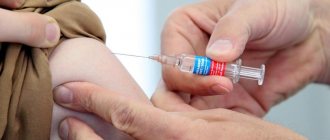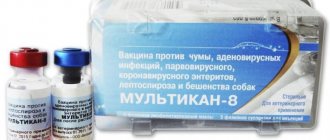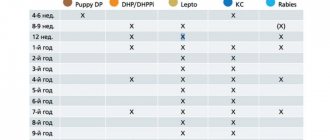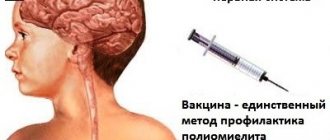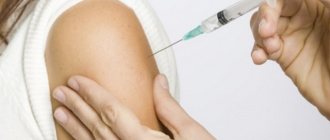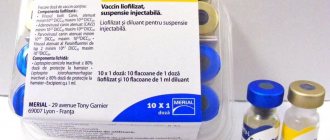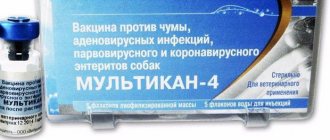Nobivac Lepto
NOBIVAK LEPTO (Nobivac Lepto)
COMPOSITION AND RELEASE FORM
Nobivak Lepto is an inactivated bivalent vaccine against leptospirosis in dogs. Each bottle (1 dose) of the vaccine contains at least 200 million inactivated pathogens L. canicola (strain Ca-12-000) and L. icterohaemorrhagiae (strain 820 K). In appearance, the vaccine is a colorless transparent suspension. Packaged in 1 ml (1 dose) in glass bottles, packed in 10 pieces in cardboard boxes.
PHARMACOLOGICAL PROPERTIES
Vaccinated animals develop immunity within 3 weeks after vaccination. The intensity of the resulting immunity is sufficient to protect animals from leptospirosis for 1 year. The vaccine is harmless and areactogenic.
INDICATIONS
The Nobivak Lepto vaccine is intended for active immunization of dogs against leptospirosis. Vaccination prevents leptospirosis and leptospirosis carriage in dogs.
DOSES AND METHOD OF APPLICATION
Only clinically healthy animals are vaccinated with the vaccine.
Puppies are vaccinated with the Nobivak Lepto vaccine from 8 weeks of age, with repeated vaccination after 2-3 weeks. Basic vaccination of adult, previously unvaccinated dogs, as well as annual revaccination, are carried out according to the same scheme - twice with an interval of 2-3 weeks.
Shake the vaccine thoroughly before use. The drug is administered to dogs in the amount of 1 dose subcutaneously in compliance with the rules of asepsis and antiseptics. The Nobivak Lepto vaccine can be used as a diluent for the Nobivak DHPPi, Nobivak DHP vaccines, as well as mixing and simultaneous use with the Nobivak Rabies vaccine in a dose ratio of 1:1.
SIDE EFFECTS
The vaccine does not cause post-vaccination, clinically significant reactions. In some cases, a slight swelling may form at the injection site of the drug, which spontaneously disappears within one to two weeks. After using the vaccine, hypersensitivity reactions are possible; in this case, subcutaneous administration of adrenaline in recommended doses is indicated.
CONTRAINDICATIONS
Hypersensitivity to vaccine components.
Dogs are not subject to vaccination two weeks before and three weeks after birth, as well as within 7 days after deworming.
SPECIAL INSTRUCTIONS
It is recommended to shake the vaccine bottle before use. If the integrity of the vial is damaged or at the end of the specified expiration date, the unused vaccine must be disinfected by boiling for 5-10 minutes. Vaccine vials that have been frozen, discolored, contain foreign impurities, or not used within 24 hours after opening are subject to rejection and subsequent disposal.
STORAGE CONDITIONS
The vaccine is stored and transported in a dry place, protected from light, at a temperature of 2 to 8 ºС. Freezing the vaccine is not allowed. Shelf life – 2 years.
MANUFACTURER
Intervet International B.V. (Intervet International BV), Holland.
Representative office in Russia:
125445, Moscow, st. Smolnaya, 24 D, commercial tower “Meridian”. Tel., 956-71-40 Fax, 956-71-41
Goods for pets:
Catalog sections:
Subscribe to VETLEK veterinary pharmacy news!
Source
Doses and method of administration
Only clinically healthy animals are vaccinated with the vaccine.
Puppies are vaccinated from 8 weeks of age, with repeated vaccination after 2-3 weeks. Basic vaccination of adult, previously unvaccinated dogs, as well as annual revaccination, are carried out according to the same scheme - twice with an interval of 2-3 weeks.
Shake the vaccine thoroughly before use. The drug is administered to dogs in the amount of 1 dose subcutaneously in compliance with the rules of asepsis and antiseptics. The Nobivak Lepto vaccine can be used as a diluent for the Nobivak DHPPi, Nobivak DHP and Nobivak Triket vaccines, as well as mixing and simultaneous use with the Nobivak Rabies vaccine in a dose ratio of 1:1.
Causes of leptospirosis in dogs
Leptospirosis is caused by various strains of the Leptospira genus. Different strains of Leptospira are common in different regions and countries.
Risk factors
Leptospira bacteria survive particularly well in warm, humid regions and are often found in stagnant water (such as ponds). Wild animals can carry leptospirosis. Therefore, dogs with a higher potential for exposure to contaminated water, wildlife and their urine are at greater risk (eg dogs living in rural areas, hunting dogs).
In adult dogs, males, and large breed dogs, the risk of infection is higher. However, any dog can be infected, as even in cities, wildlife can carry leptospirosis (such as mice and rats). Most often, infection with leptospirosis occurs in the summer and early autumn. Disease outbreaks cause floods.
Leptospira bacteria are found in the urine of infected animals, although they can also be found in other body fluids and tissues. Dogs can become infected through contact with contaminated water (either through ingestion or through contact with mucous membranes or broken skin), or through contact with the urine of an infected animal (for example, through contaminated food, soil, etc.). Through injury (bites) and eating infected animals.
Once Leptospira bacteria enter the body, they penetrate various tissues of the body. The immune system can protect most of a dog's body, but Leptospira can hide in the kidneys and then be excreted into the environment in urine for many months after infection. Antibiotic treatment may help prevent long-term urinary shedding of Leptospires.
Causes of leptospirosis infection
Among dogs of different breeds, such a serious infectious and parasitic disease as leptospirosis is often encountered, the causative agents of which are Leptospira bacteria, which live in a humid environment and have a high level of resistance. Most often this is soil and water bodies.
At the first signs of leptospirosis in a dog, you should immediately contact a veterinary clinic, as self-treatment may be ineffective.
Treatment is best done in an inpatient setting after a diagnostic examination. Other names for the disease are infectious jaundice or Weill's disease.
The peculiarity of this disease is that all systems and organs are affected, which is very dangerous for the lives of dogs. In addition, leptospirosis has serious complications. It is transmitted into the environment by recovered animals.
Bacteria - Leptospira are excreted from the body along with milk, feces and discharge from the genitals.
Known carriers of this pathogen are rodents: mice, rats, and so on. Parasite activity begins in the summer and spring, and people and animals most often become infected in the month of August.
This disease affects dogs, cats and other mammals. The infection tolerates low temperatures well and remains active for several months. Under favorable conditions, the viability of leptospirosis persists for up to six months. The best conditions for the development of bacteria are elevated temperature and humidity. In reservoirs where there is an accumulation of Leptospira, a visible film forms on the surface of the water. In ordinary water, bacteria live for about a month, and in running water - no more than ten days.
A dog can become infected with leptospirosis in two ways:
- Contact - through mucous membranes, damaged skin, household items, food, dishes and through the placenta from mother to puppy.
- Nutritional – infection occurs after the bacteria enters the stomach, for example, when a dog drinks from an infected pond or eats a carrier of this disease.
Leptospirosis enters the animal's body through the respiratory tract, genitals and blood. For this reason, while walking, it is important to monitor what your dog eats and who it comes into contact with. This disease is especially hard on dog breeds that have a loose build, such as lap dogs, boxers, and basset hounds.
Is leptospirosis dangerous for humans?
Leptospirosis is dangerous because it can infect not only animals, but also humans, as a prominent representative of mammals. Therefore, if leptospirosis is detected in a dog, its owner should be careful and adhere to certain safety measures:
- When caring for a sick pet, use personal protective equipment, for example, rubber gloves;
- the place where the animal is kept and fed must be perfectly clean;
- If possible, exclude the dog from contact with other animals and family members. If children live in the house, then the dog should be kept in another place.
To eliminate the risk of infection, you must:
- disinfect the places in the house where the dog was with three percent chloramine-B and irradiate the room with a UV lamp for about half an hour;
- Do not let your pet lick your hands;
- It is important to prevent situations where a dog relieves itself in a living space. In case of involuntary urination, you need to treat the area with a 2% chlorine solution or 3% chloramine-B;
- If the dog’s diagnosis is confirmed, then all people in contact with it need to be examined for the presence of the bacteria.
Signs and symptoms of canine leptospirosis
The severity of symptoms varies and depends on the dog (age, immune response, vaccination status), strain of Leptospira, and other factors. Some dogs may have mild symptoms or even no symptoms at all. In some cases, infection can be fatal.
Signs and symptoms of leptospirosis in dogs may include:
Diagnosis of leptospirosis in dogs
Definitive diagnosis is usually made by detecting bacteria in samples (usually urine), or by detecting increasing levels of antibodies to Leptospira over time, indicating an increased immune response. Several tests are performed for Leptospira antibodies, as a single test may be positive due to recent exposure to Leptospira bacteria (eg, infection without symptoms) or vaccination.
Vaccination of dogs against leptospirosis. Prevention.
In Moscow and other regions of the country, leptospirosis is common and vaccination of dogs against leptospirosis is mandatory. The vaccine against leptospirosis is included in the mandatory set of complex vaccines. See this article for the vaccination schedule for puppies and adult dogs. The cost of dog vaccination at the Constellation Center is one of the lowest in Moscow.
In addition to vaccination, deratization is carried out to reduce the spread of leptospirosis.
In areas where leptospirosis occurs, do not allow dogs to swim in ponds or bodies of water with stagnant water!
Caring for a dog with leptospirosis
Leptospirosis can cause flu-like symptoms in people, and in some cases leptospirosis in humans can progress to serious illness. If your dog has been diagnosed with leptospirosis, careful hygiene can reduce the risk of infection to humans. In fact, dogs that are infected with leptospirosis but do not show symptoms likely pose a greater risk of infecting an unsuspecting owner.
Source
| Veterinary clinic VetAngel |
8 Opening hours: From 10:00 to 21:00
Services
Cost of vaccinating dogs against leptospirosis
| Name of service | Cost, rub. |
| Vaccination | |
| Dog vaccination: | |
| Nobivak DHPPi+RL (full complex, with rabies) | 1300 |
| Nobivak DHPPi+L (complex, without rabies) | 1300 |
| Nobivak Puppy (vaccination of puppies at an early age against distemper and enteritis) | 1000 |
| Euricam DHPPiRL (full complex, with rabies) | 1300 |
| Euricam DHPPiL ((complex, without rabies) | 1300 |
| Vanguard-7+R (full complex, with rabies) | 1300 |
| Vanguard-7 (complex, without rabies) | 1300 |
| Vanguard Plus 5/L4 CV (complex, with rabies) | 1300 |
| Biovac DPAL (complex, without rabies) | 920 |
| Multikan-8 (complex, with rabies) | 950 |
| * The cost of vaccination includes: clinical examination, vaccine, injection, entry into the veterinary passport. | |
You can get more detailed information about treatment by calling or consult with our doctors by making an appointment.
The need for vaccination against leptospirosis
A pet can become infected with leptospirosis through contact with rodents or other animals infected with the disease, through a body of water with stagnant water, contaminated meat and open wounds, or through the transplacental method. The average incubation period of the disease is 4-14 days.
If the animal is not given timely therapy or if it is infected with a large dose of Leptospira, acute liver or kidney failure, as well as leptospiric meningitis, may occur.
To prevent the development of the disease in an animal, special vaccinations against leptospirosis are used. The vaccine against leptospirosis, which is administered to pets, contains viral strains that, after entering the body, produce antibodies that contribute to the formation of stable immunity against the virus.
If the animal has already become infected with this disease, you should urgently contact a veterinarian for treatment using a special serum. Immunization can be performed only after the pet has fully recovered. Vaccinations against leptospirosis are administered intramuscularly. Vaccination must be repeated every year.
Annual preventive vaccination of pets will protect them from infection with a dangerous virus, as well as prevent the risk of infection of the owner and his other loved ones.
Only completely healthy pets can be vaccinated. Therefore, even in the case of diarrhea, vomiting, a slight increase in temperature, development of otitis media or a cut paw, vaccination is prohibited. You also need to observe a minimum 10-14 day period after deworming. The vaccine cannot be administered even if hyperimmune serum is used (you must wait at least 20 days). In addition, it is prohibited to vaccinate an animal that has previously been given an immunosuppressant - in this case, you must wait at least 3 months from the date of the last injection.
Source
Nobivac RL Nobivac vaccine against rabies and leptospirosis in dogs 1 ml
COMPOSITION AND FORM OF RELEASE
The combined inactivated vaccine in one dose (1 ml) contains at least 2 IU of rabies virus strain Pasteur-RIV, at least 2x108 microbial cells Leptospira canicola (strain Ca-12-000) and 2x108 Leptospira icterohaemorrhagiae (strain 820K), as well as an adjuvant - phosphate aluminum In appearance it is a suspension of pinkish-beige or cream color with a white precipitate. The drug is packaged in glass bottles of 1 ml and packed 10 pieces in a cardboard box.
PHARMACOLOGICAL PROPERTIES
The vaccine induces the production of specific antibodies to the pathogens of leptospirosis and rabies in dogs within 14-21 days after repeated injection. The duration of immunity is 3 years against rabies and 1 year against leptospirosis, after which repeated immunization is carried out.
INDICATIONS
Prescribed to dogs for the purpose of specific prevention of leptospirosis (including leptospirosis) and rabies in the general vaccination scheme of the animal.
DOSES AND METHOD OF APPLICATION
Before immunization, bottles with the vaccine are shaken vigorously and injected subcutaneously into the animal's neck or shoulder blade. A separate sterile needle and syringes are used for each animal. Puppies are vaccinated with the Nobivak RL vaccine from 8-9 months of age, and after 2-3 weeks - Nobivak Lepto. Adult, previously unvaccinated dogs are immunized twice with an interval of 2-3 weeks. Revaccination is carried out annually at a dose of 1 ml. The Nobivak RL vaccine can be used as a diluent for other Nobivak DHPPi and Nobivak DHP vaccines.
SIDE EFFECTS
In very rare cases, after using the vaccine, hypersensitive animals may experience allergic reactions, slight swelling at the injection site, which spontaneously disappear within 1-2 weeks and do not require additional treatment.
CONTRAINDICATIONS
Clinically sick animals, bitches 2 weeks before and the first 3 weeks after birth, as well as dogs during the first 7 days after deworming are not subject to vaccination.
SPECIAL INSTRUCTIONS
When manipulating the drug, you should follow the rules of asepsis and avoid contamination of the vaccine. If the vaccine gets on the skin or mucous membranes of the eyes, it must be washed off immediately with a stream of water. At the end of the treatment, hands should be washed thoroughly with warm water and soap.
STORAGE CONDITIONS
With caution. In a dry, cool place, protected from light and out of reach of children and animals, at a temperature of 2 to 8 °C. Freezing of the vaccine is not allowed. Unused vials opened for more than 24 hours must be disinfected by boiling for 15 minutes and then disposed of. Shelf life: 2 years.
Vaccination of dogs against leptospirosis
Leptospirosis is an acute bacterial infection that affects the liver, kidneys, muscle tissue, and without treatment leads to the death of the animal. Unfortunately, this disease is quite common in our area. It is transmitted from animal to animal. Leptospira is excreted from the body of a sick animal mainly in the urine. In water or soil, it remains viable for weeks or even months. Animals become infected through contact with each other, with the urine of an infected dog, rodents (often rats), and when swimming in bodies of water, especially stagnant ones. The infection is contact; Leptospira enters the body through the slightest cracks or cuts in the skin, through the mucous membranes of the eyes, nose, and mouth. Leptospirosis is also characterized by transmissible infection, that is, infection through insect bites. Taking into account all these factors, most often animals get sick in the warm season. But given the long incubation period and the fact that the disease can occur for a long time without any symptoms, the disease also occurs in winter, but much less frequently.
Is it dangerous for humans?
This disease is dangerous for people and can be transmitted from a sick dog to its owner. Because it can take several weeks from the time of infection to the onset of symptoms, a dog can infect its owner before he realizes that his pet is sick and can do something to ensure his safety.
How is it transmitted?
Entering the body through cracks, abrasions or by ingestion, within an hour the leptospires enter the bloodstream and are carried by the bloodstream to the liver, where they begin to actively multiply. At the same time, the animal’s body temperature rises. Then they are distributed to all organs and tissues. They feel best in the kidney tubules, where the body's antibodies cannot reach them. The pathogen destroys erythrocytes - red blood cells, resulting in anemia (lack of red blood cells), jaundice (caused by the breakdown products of red blood cells), urine may acquire a brown tint. Animals often die due to kidney or heart failure.
How is this disease treated?
Antibiotics are used directly against the pathogen, but symptomatic therapy aimed at eliminating the consequences of the disease also plays an important role. Dogs are given intravenous infusion solutions, hepato- and nephroprotectors, in order to remove intoxication and help the body quickly remove the breakdown products of red blood cells. In order for the bone marrow to form new blood cells, sick animals are given vitamins and iron supplements. The treatment is not easy, it takes a long time, given that the liver, kidneys and blood vessels are affected, it is difficult to completely restore the body.
How effective is vaccination? How is it carried out?
Taking into account all these arguments, we are actively using a vaccine that prevents a dog from getting sick even through direct contact with the bacterium. As in the case of vaccination against canine distemper, parvovirus, parainfluenza and adenovirus, the first vaccination is given to the puppy at 2 months. After 3-4 weeks, revaccination is carried out in order to consolidate information about the bacteria in the body’s memory (maintain the necessary level of antibodies so that it lasts for a year).
In the future, adult dogs are vaccinated against leptospirosis once a year, combining it with complex vaccination (against distemper virus, parvovirus, adenovirus, parainfluenza). Therefore, many manufacturers produce this complex together with leptospirosis (2 bottles - the dry substance is diluted with a liquid substance and the entire complex is administered with 1 syringe).
For this, we use vaccines such as Nobivac L (Netherlands), Duramun and Vanguard (ZOETIS, USA), Kanigen (Virbac SA, France).
Before vaccination, an examination of the animal by a specialist is required, because only clinically healthy dogs are vaccinated.
Are there any possible side effects?
Allergic reactions are very rare, but possible. Therefore, plan your vaccination so that you can observe your pet for several hours afterwards to make sure that he tolerates the vaccination well.
Vaccinating your dog against leptospirosis every year will keep you safe on your walks together!
Do you want to share this article with your friends?
Source
Symptoms of the disease
A sick pet's activity decreases and its health gradually worsens. The infection can be recognized by the following symptoms:
- increased heart rate, as well as a sharp rise in temperature to 42 ° C;
- the appearance of a fetid odor of ammonia from the mouth, yellowing of the mucous membranes, conjunctiva and whites of the eyes;
- refusal of water, which reduces the frequency of urination;
- the formation of small suppurating ulcers in the mouth that resemble scratches;
- heavy and frequent breathing with gurgling and wheezing;
- bloody vomiting and diarrhea, alternating with constipation;
- unpleasant-smelling coating on the skin and coat;
- blood in the urine, changing its color to brown;
- severe painful spasms during palpation and the occurrence of convulsions;
- tissue necrosis on the nose.
Gradual exhaustion of the body over time leads to a drop in temperature. A week later it drops below 37.5 °C, going beyond the lower limit of normal. By this time, the chances of saving the dog are already minimal.
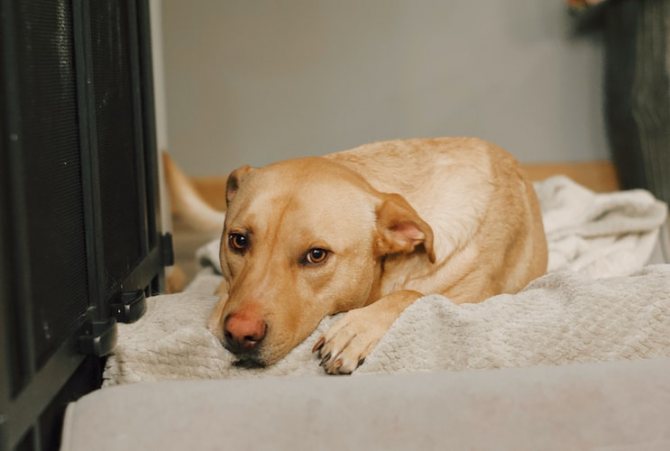
The most dangerous form of pathology is asymptomatic. Due to late diagnosis, veterinarians rarely give a favorable prognosis.
The opposite situation is typical for owners of numerous folds on the skin: basset hounds, sharpeis, bloodhounds, bulldogs, pugs, mastiffs. Infection of these breeds is accompanied by the most striking symptoms, so owners notice pathological changes before irreversible complications appear.
Description of the disease
Leptospirosis or infectious jaundice, or Weil's disease, is an infectious disease caused by the bacterium Leptospira. Distributed almost throughout the world (except Antarctica), affecting most species of mammals. More than 200 species and subspecies of the pathogenic bacterium Leptospira (called serotypes or serogroups) are known to veterinary medicine. But more than 50% of them do not cause pathologies.
Important! Leptospira bacteria are close “relatives” of borreliosis and syphilis.
In water it can remain active for 30 days, under favorable conditions. In running water no more than 10 days. In soil with high humidity, Leptospires remain virulent for up to 300 days.
Bacteria are susceptible to drying out and changes in pH. When the temperature rises to 76 degrees and above, the infection dies instantly.
Routes of infection
The main routes of infection with leptospirosis:
Important! Dogs can shed Leptospira in their urine without showing clinical signs.
Carriers of leptospirosis are most often rodents and small predators that eat them:
This is not the entire list of potential carriers of leptospirosis. Almost all mammals are susceptible to the disease, including cattle, artiodactyls, and almost all canines. Remarkably, cats are the least likely to get sick.
Symptoms and signs in dogs
The disease has a huge number of clinical signs, as it affects almost all internal organs, nervous and circulatory systems, and skeletal muscles . American doctors have nicknamed leptospirosis the chameleon disease, because due to the number of symptoms, leptospirosis can be confused with canine distemper or infectious hepatitis.
Main symptoms and signs of leptospirosis:
Most often, symptoms appear 4–9 days after infection. Signs of leptospirosis may vary depending on which organs are affected. All organs may be affected, in which case the symptoms will be extensive. But the greatest danger this disease poses is that the symptoms are not always pronounced; it all depends on the individual characteristics of the body.
After entering the body, the easiest way for Leptospira bacteria to penetrate is the kidneys; therefore, the first clinical signs are associated with urination. Then the functioning of the liver, gastrointestinal tract, and spleen is disrupted. Also, the walls of blood vessels are destroyed, the functioning of the circulatory system is disrupted, which leads to internal bleeding.
Important! Animals that have recovered from the disease remain carriers of Leptospira for a long time.
What kind of disease is leptospirosis in dogs?
Alternative names are Weil's disease and infectious jaundice. Its causative agent is the spiral-shaped bacterium Leptospira. It is resistant to most adverse factors and is able to remain viable even at -70 °C.
In frosty times, leptospira are less active, so outbreaks of diseases decrease with the arrival of winter. The most favorable environmental conditions for this microorganism are high humidity and heat. Because of this feature, it is often found in stagnant bodies of water and wet soil.
After entering the body of an infected person, leptospira quickly spreads through his blood vessels, liver, kidneys and other important systems. Their waste products lead to severe intoxication, thicken the blood, form blood clots and disrupt the functioning of internal organs.
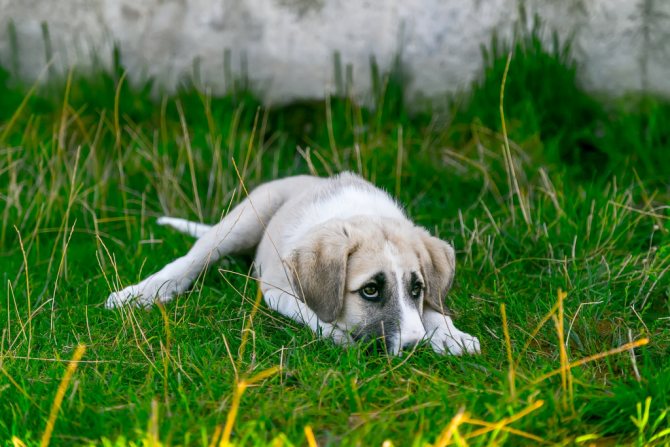
Forms of leptospirosis
Leptospirosis in dogs is divided into 3 forms - chronic, hemorrhagic and icteric. The symptoms depend on the form of the disease. The state of the dog’s immune system determines the nature of the disease.
Chronic
The disease enters the chronic phase if the dog has managed to get sick from other types of leptospirosis. The chronic form lasts several years, and with a decrease in immunity or concomitant diseases it reappears. Diagnosed quite rarely.
Symptoms of chronic leptospirosis:
Hemorrhagic
The anicteric phase of leptospirosis occurs most often in fully formed individuals. The duration of the acute hemorrhagic phase is up to 7 days . If treatment is untimely or incorrect, death occurs in 70% of cases, or the disease progresses to the chronic stage.
The Leptospira bacterium in the hemorrhagic form of the disease primarily affects the circulatory system. Based on this, the clinical signs are:
After 3–4 days, the body temperature drops to normal or lower. Blood impurities are clearly visible in the vomit and stool. Within 2–3 days, with a probability of more than 80%, the dog can no longer be saved. The animal will die from dehydration or internal bleeding.
Jaundice
A form of leptospirosis, called icteric, is diagnosed more often in dogs with immature immunity, under the age of two years. The acute course of the icteric phase lasts up to 7 days , the mortality rate is about 65%.
The symptoms are similar to hemorrhagic . The main difference between the two phases is the pigmentation of the mucous membranes; during the icteric phase, the mucous membranes of the mouth, eyes and the upper layer of the epithelium become yellow. This is due to the fact that the Leptospira bacterium is localized in the liver. Leads to increased levels of bilirubin in the blood, which in turn gives a yellow tint.
Death occurs from intoxication of the body.
Symptoms of leptospirosis
Leptospirosis is characterized by an acute onset: fever with chills, insomnia, headaches and thirst. The patient then exhibits the following symptoms:
- I am bothered by muscle pain, especially in the calves, thighs and lower back, and it is difficult to move normally.
- the face and neck turn red, swelling appears, “hood symptom”,
- The whites of the eyes turn red, and there is a feeling of sand in the eyes.
The duration of fever is 5 days or more. It is characteristic that 1-2 repeated peaks of fever may occur. If the disease reaches a severe stage, then jaundice occurs with yellowing of the sclera and skin, a rash on the skin, it can develop into hemorrhagic elements. Damage to the heart with low blood pressure and bradycardia, nasopharyngitis, pneumonia are also possible; the nervous system and kidneys are affected.
Diagnostic methods
The main carrier of Leptospira is blood, or rather the antibodies produced by the body against the bacterium. Antibodies can be detected as early as 10 days after infection. Leptospira can then be detected in urine. Therefore, blood and urine collection are an exceptional condition for the correct diagnosis of leptospirosis.
Important! Blood and urine tests provide a more plausible picture before introducing antibiotics into a dog's body, regardless of the duration of symptoms.
Test for leptospirosis in dogs
The microagglutination test, a serological blood test, is the most widely used diagnostic test for leptospirosis. But it must be carried out in conjunction with urine tests, and the procedure must be repeated after 2–3 days . Since in the initial stages the number of antibodies to Leptospira may be “within normal limits” (1:100 and even 1:200 is considered normal in regions that do not have outbreaks of epidemics). Also, the results are highly dependent on the quality control of the laboratory.
Reaction to the leptospirosis vaccine
Well, I read that the incubation period for leptospirosis can last quite a long time, so the dog could well have left Russia sick. Actually, we went to get vaccinated. More precisely, my husband went and asked about leptospirosis, our veterinarian told him exactly the same thing that I had previously learned from dog lovers - they don’t vaccinate against leptospirosis, they say that in Finland it really doesn’t exist and, if I understood correctly, this is related to the climate, so vaccination is recommended only for those who travel abroad to warmer countries... I can only believe them, because they said that at our insistence they can get vaccinated, but after that they abdicate responsibility for their health dogs. Hmmm.
from WHO (World Health Organization) sources
According to WHO definition (WHO Recommended Surveillance Standards, WHO,
1999), “Leptospirosis is a zoonotic disease with a worldwide distribution;
the highest level of their epidemic manifestation is observed in
countries with humid subtropical and tropical climates.
The incidence is characterized by pronounced seasonality and is often associated with
professional activity and can manifest itself in the form of outbreaks.
Wild and domestic animals of many species serve as sources of pathogens
Leptospira, belonging to numerous serovars. The infection is transmitted
to humans through direct contact with the urine of infected animals
or through environmental objects contaminated with urine
animal carriers of leptospirosis (mainly through water, soil and
plants). The severity of infection in humans varies from mild to
lethal forms. In many countries, leptospirosis is frequently detected and
are not fully recorded due to the complexity of clinical diagnosis and
lack of laboratory confirmation of diagnosis.
In Finland there is no laboratory base for leptospirosis, “no laboratories - no problem.” They do not know either the signs of the disease or the methods of diagnosis, and since the symptoms are in many ways similar to both plague and enteritis, they can always be blamed on something else. In other European countries, leptospirosis is included in the list of mandatory vaccinations; it is not for nothing that it is a mandatory item in the international veterinary passport.
I can tell you a “funny” story. A close friend of my daughter-in-law has been living in St. Petersburg for 13 years. He is the head doctor of a mental hospital. Those. she has honey. education. She was not in Georgia for 4 years. The girl felt unwell for half a year, fatigued easily, bruises all over her body, endless fever..... Since her husband is also a doctor, they were doomed to go for tests... The diagnosis was leukemia, and it was a form that could not be treated. They gave me a maximum period of two years and scheduled an operation to cut out my spleen so that I would be more likely to last 2 years rather than half a day. They almost ordered a place in the cemetery. My daughter-in-law is an immunologist. Moreover, he does tests for leukemia and AIDS and leishmania, etc. Excellent knowledge of all forms. Something sank in her heart. She insisted on sending the blood to Georgia for testing. We have a laboratory here organized by a British university, the technology is super duper. The test results were received exactly the next day, when an operation was performed in St. Petersburg and the spleen was removed....... The diagnosis was leishmaneliasis. It’s also unpleasant, but compared to non-curable leukemia, it’s nothing. They sent the tests to St. Petersburg, and there the doctors blinked their eyes and began asking, what is this? but does this happen? how is it treated? We delved into the encyclopedia and archives. The last case of leishmania was registered in St. Petersburg 11 years ago. Of course, no one teaches or knows such exoticism. We contacted colleagues in the States and found out the treatment method. Course - $25,000. The girl had to come to Tbilisi for treatment, since we treat leishmania once, twice, three times and the price, to put it mildly, is several times lower... As a result, a happy ending will live happily ever after, albeit without a spleen…….
Conclusion. Since in St. Petersburg they haven’t encountered such a miracle Yud in person, they believe that there is no such thing, but if you go to Moscow, then in Moscow you can already encounter it, yes………..not every 15 is sick, but still there is. Well, there are no doctors specializing in exotic diseases in St. Petersburg. And maybe there were cases, but they were recorded as leukemia, but the symptoms are similar.....the problem is the lack of a laboratory that conducts tests specifically for this disease and specialists who know how to make a diagnosis at least based on external symptoms........It’s the same with the Finns …… There are boundaries for people, but there are none for rats, insects, wild animals, birds…….
I know many doctors who are categorically against rabies vaccination. They also talk about problems with fatal outcomes.
Possible consequences
Dioxycycline, a broad-spectrum antibiotic, is also used as part of combination therapy. It has established itself as a drug with positive dynamics against gram-negative microorganisms (including Leptospira bacteria). Apply orally 1 time per day, 10 mg per 1 kg of dog weight. The price of the drug is 30 rubles for 10 capsules.
Leptospirosis in dogs is a serious disease, the consequences of which are sometimes irreversible. After long-term treatment, restorative therapy is often prescribed. Which is aimed at avoiding the consequences of the disease. Dogs that have had leptospirosis experience:
Dogs that have recovered from Weill's disease remain carriers of the infection for several years. But those who have suffered the disease themselves develop lasting, lifelong immunity.
Prevention
To avoid infection with infectious jaundice, it is necessary to observe basic hygiene standards. Dogs in crowded conditions (kennels, pet hotels, shelters) are at increased risk. Also pets that often come into contact with cattle. Hunting dogs and others that eat small rodents and quench their thirst in stagnant bodies of water.
Prevention of leptospirosis includes keeping animal areas clean. Exclusion from the diet of small rodents and wild animals (potential carriers of the bacteria). Prohibition on drinking from puddles and other sources of stagnant bodies of water (while walking, carry clean drinking water with you not only for yourself, but also for the dog).
Serums against leptospirosis
Dog vaccination is the main and most effective prevention against leptospirosis. Immunization against viral infections is carried out with a complex serum that includes Leptospira strains.
The most popular vaccines against leptospirosis with average clinic prices:
The first immunization is carried out at the age of approximately 8 weeks, after 21 days a revaccination is required. The next time the serum is administered at one year of age, then duplicated annually until the end of the dog’s life.
A veterinarian in areas unfavorable for leptospirosis may prescribe immunization more often than once a year (once every 6–9 months, depending on epidemic outbreaks). The picture is the same for hunting dogs; the veterinarian may recommend administering the serum more often than other pets.
Symptoms and treatment of leptospirosis in dogs
The causative agents of a dangerous infection penetrate into a susceptible body through the mucous membranes lining the oral and nasal cavities, as well as the mucous membranes of the eyes, genitals, digestive tract and damage to the skin - cuts, bites, scratches. Leptospirosis is especially dangerous for small puppies, who can become infected from a sick mother in utero or through drinking infected milk.
The infection can affect domestic animals regardless of the time of year. But the highest peak incidence occurs in the summer and early autumn. There are several types of leptospirosis. Depending on this, symptoms will appear. Along the course, leptospirosis can be:
- lightning fast;
- sharp;
- subacute;
- chronic.
In the hyperacute form of leptospirosis with a mortality rate of up to 98%, the symptoms do not have time to manifest themselves to the proper extent. The entire period from the moment the infectious agent enters the body until death takes from two hours to two days. Owners of dogs, and especially puppies, do not have time to seek help and the pet dies.
In the acute form of the infection, which affects young animals under 2 years of age, the following symptoms occur:
- febrile conditions - body temperature rises to 39.5-41.5 degrees;
- refusal of food;
- severe lethargy, depression and weakness;
- icterus (yellowness) of visible mucous membranes and skin;
- problems with urination - urine is released in small portions and has a rich brown or cherry hue.
When taking blood for analysis from an animal with an acute form of leptospirosis, increased clotting is noted.
In the subacute form of a dangerous infection, all of the above symptoms are diagnosed, as in the acute course, but in a less pronounced form. Temperatures may not change or rise above 39.5 degrees.
With properly organized treatment, the disease lasts quite a long time, but ends with complete recovery. In order to prevent infection with leptospirosis, it is very important to limit the animal’s access to closed bodies of water, avoiding swimming, both during and after treatment.
When leptospirosis is diagnosed in a dog, complex therapy is carried out. The basis of treatment is the administration of hyperimmune serum against leptospirosis. The dosage is selected by the doctor, based on the weight of the animal, the severity of the pathological process and the presence of concomitant diseases. The serum is administered over 3 days, subcutaneously once a day.
To suppress pathogenic microorganisms, antibiotic therapy is prescribed for 5-7 days. Treatment is carried out with penicillin antibiotics - Benzylpenicillin, Bicillin-1 and Bicillin-3. Antibiotics are administered exclusively intramuscularly; intravenous administration is prohibited. Streptomycin can also be used for treatment, but sulfonamide drugs are not recommended for the treatment of leptospirosis.
The best solution is still prevention. To prevent your pet from becoming infected with leptospirosis, it is necessary to vaccinate regularly.
Vaccination is not mandatory, such as the rabies vaccine. However, it is desirable. Immunity after vaccination against leptospirosis remains at a high level for 9 months, although vaccination is carried out once a year. Experts recommend the first vaccination for puppies starting at 1 month of age. Dogs are not immunized against leptospirosis during the period of gestation, as well as lactating dogs and immediately after deworming.
Is the disease dangerous for humans?
Almost all mammals on the planet suffer from leptospirosis; unfortunately, humans are no exception. Therefore, preventive measures for dogs should be taken more than seriously. After all, this is fraught not only with the death of the pet, but also with a deterioration in the health of the owner.
If clinical signs of leptospirosis are detected in a dog, the owner must carefully observe safety measures. It is best if the animal is placed in a hospital hospital. But if this is not possible, then it is very important:
For both dogs and humans, serum against leptospirosis can be administered. Vaccination against infectious jaundice can be given to people starting at the age of seven. For persons who have constant contact with animals, immunization against leptospirosis is recommended by doctors.
